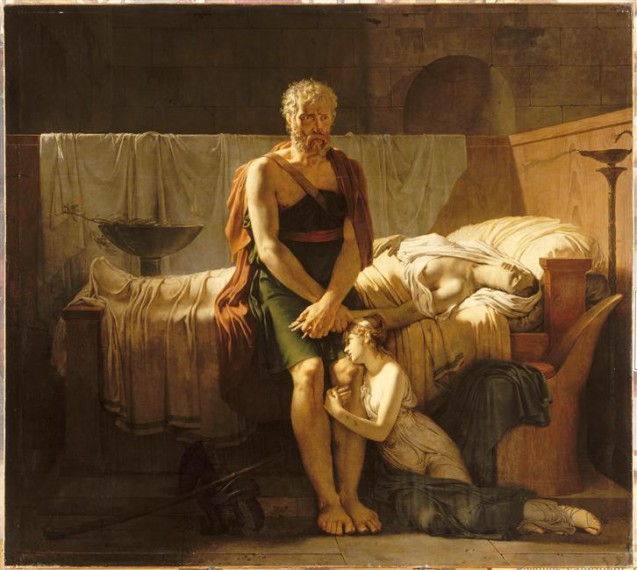Three years after having won the Prix de Rome, Guérin (a pupil of Jean-Baptiste Regnault’s, who himself was David’s great rival) presented a painting at the Salon of 1799 which was to bring him enormous fame and appreciation. Not only was this work by Guérin the debutante much liked by the public it was also admired by his peers. Indeed, he was awarded victor’s laurels and feted at a ceremonial banquet. The catalogue for the Salon presents the painting in the following terms: “Marcus Sextus, having escaped the proscriptions of Sylla, on his return finds his daughter in tears at the bedside of his dead wife”. The episode is imaginary. The reference to ancient history was only a cover for the evocation of contemporary history. For the public which thronged to see the picture, the message was clear: Marcus Sextus, the Roman aristocratic victim of Sylla’s proscription, is the symbol of the French émigré who, on his return finds all his belongings and property pillaged and his family decimated. That many critics also discussed publicly the interpretation of the work is shown by the following article published in Le Bulletin de l’Europe: “In every corner of France, memories have been rekindled, old wounds have been re-opened and ancestors are turning in their graves as a result of this painting by Guérin. This is a leaf from the book of our destinies, and it condemns both Sylla and Robespierre equally!”. Le retour de Marcus Sextus was so successful that Guérin was to present the painting again at the Decennial Competition of 1812.
This work is pure Neoclassicism. The geometrical composition is that of a cross, with Marcus Sextus as the vertical and his dead spouse as the horizontal. The dead body has the majesty of antique statuary. The front-on view and the immobility of the proscript gives a particularly dramatic power to the scene, a power which is heightened by the bright light bathing the corpse and the back-lighting of Sextus. This melodrama, tinged with current affairs, gives the picture almost an ideological import. Guérin’s work is a political piece which found a strong echo in the popular post-revolutionary sentiment. By denouncing the bloody Revolution, he shows that it is well and truly finished and that it is now time for reconciliation.
Karine Huguenaud (tr. P.H.)
June 2002


